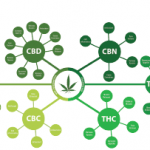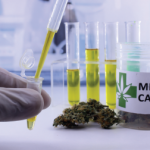In centralized pain, as in fibromyalgia, cannabinoids might be an especially good option, Dr. Clauw said.
“These are the pain conditions where medical marijuana may be particularly useful, because these are conditions in which opioids are ineffective and they may even make these worse,” he said.
He suggested that cannabinoids should be ahead of opioids in many algorithms for chronic pain.
“Even if we end up replacing one problem for another this is a safer addiction, if you will, than the opioid addiction,” he said.
Risk
Cannabinoids are not without risk, of course, but Dr. Clauw said, “Almost everything we know about the risk of cannabinoids is worst-case scenario because the data come from people who are recreational users of marijuana”—an approach, he said, that would be similar to studying long-time heroin users to assess the risk of Vicodin.
[Marijuana] works in basically the same way opioids work—not by actually doing away with pain, but by dissociating people from the unpleasantness of pain.
Marijuana isn’t directly lethal through, say, effects on the respiratory system, and its main potential to cause death is by causing reckless or self-destructive behavior after bringing on paranoia, he said. It’s far more dangerous in people under 25, with its dampening of motivation and risk of psychosis.
About 1 out of 10 people becomes dependent on marijuana.
“Dependence is a bit of an issue,” Dr. Clauw said. But of all the drugs that are abused, it seems to be the least addictive, he added.2
Practicalities
Dr. Clauw offered some practical views on using marijuana in medicine. He cautioned that it can’t be denied that physicians prescribing an approved cannabinoid, such as Marinol for chronic pain, are taking a risk in that they’re prescribing a controlled substance off-label, which is theoretically illegal.
He urged the use of oral forms, such as baked goods or teas, because it’s much easier to get to the levels needed without having drug levels spike. Recreational users looking for a high use much more than is needed for a therapeutic effect for pain relief.
“Most people that are legitimately medicinally using marijuana for pain don’t get high, don’t get the munchies,” he said. “[Oral] is far the preferred route of administration for someone legitimately using marijuana as an analgesic.”
Dr. Clauw also suggested that an emphasis on marijuana’s lower risk profile compared with opioids might be a way for it to gain greater acceptance in medicine.



